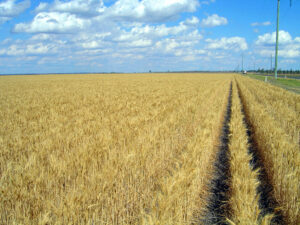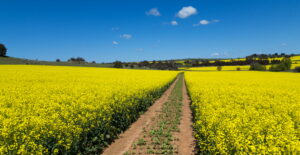Agriculture seems to have come to a point where the price of products produced is historically high, but now input prices have made even stronger gains. The data put out by the Australian Bureau of Agricultural and Resource Economics and Sciences (ABARES) around farm terms of trade won’t come as a huge surprise, but makes for interesting analysis, nonetheless.
Grain prices have always been a rollercoaster ride, impacted heavily by the variation in seasons here and in other major grain-growing countries. Livestock prices are less volatile year to year but interestingly have varied more over the last 30 years than grain.
Figure 1 shows indices for prices received by grain and livestock producers over the last 30 years. The crop index includes a range of grains, oilseeds, and pulses, while livestock includes cattle, sheep, lambs, pigs, poultry, wool, eggs, and milk.
The livestock index has taken off on a steady upward trend since 2014, driven by lambs, sheep, and cattle. With 2022-23 forecast to be lower, it will be the first decline since 2012-13. Livestock producers have had a stellar run.
The crop index has been more volatile, with drought-induced spikes, but it hasn’t had as strong a gain as livestock, increasing 66% since 1994-95 while livestock is up 158%. Most of that gain came in the last 10 years.
Fuel and fertiliser prices are inherently linked, and figure 2 shows they tend to move together, except for the GFC freight and finance-induced spike of 2008-09. The scary part of figure 2 is the increase for both last year and this year.
The fuel index is up 88% since 2019-20 and fertiliser is also up 148%. Apart from the fertiliser spike in 2008-09, both fuel and fertliser had been steady for around 12 years. Labour costs have increased steadily over time and have basically doubled over the last 30 years.
The terms of trade, which is simply the index for prices received for crop and livestock producers divided by the index for prices paid, are shown in figure 3. ABARES forecast suggests producers are experiencing their worst terms of trade since 2014-15.
What does it mean?
Weaker terms of trade are ok in good seasons, but when input costs are strong relative to prices received, it increases seasonal risk markedly. Strong terms of trade, like those seen in 2020-21, combined with a good season might see it go down as the best year of the last 20. The coming year will see a tightening of budgets, a pullback in spending, and a stronger reliance on timely rainfall for profitable outcomes.
Have any questions or comments?
Key Points
- The ABARES price indices show livestock and grain producers enjoying strong prices.
- Input costs have rallied strongly, surpassing gains in prices received.
- This year, terms of trade look like hitting close to a 10 year low.
Click on figure to expand
Click on figure to expand
Click on figure to expand
Data sources: ABARES, DAFF, Mecardo















